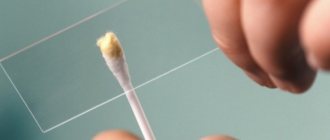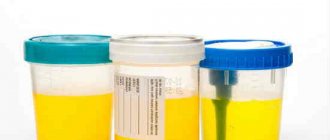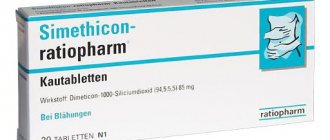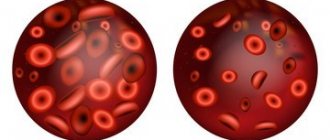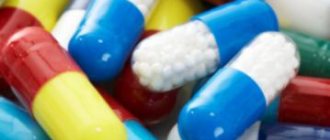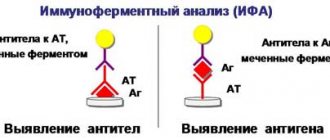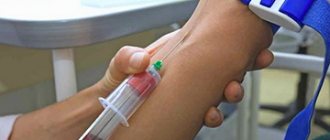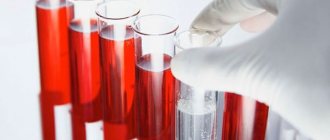The patient asked a doctor for advice: “I have all my health problems because of a diseased intestine. Doctors are sending me for a colonoscopy, but I am afraid to do it, since this procedure has many contraindications, in particular, adhesive disease. Wouldn't it be better to conduct a scatological examination of stool?
And in general, a fiberscope (I studied this topic) shows only the large intestine, and it cannot reach the small intestine. I heard that by analyzing stool one can judge the condition of all parts of the intestines and digestive organs, but for some reason the doctors at the clinic only send for complex and expensive examinations.”
Scatological examination of stool or colonoscopy?
Indeed, it is not possible to look into all corners of our body easily and simply. But we have a coprogram - a method that was known long before the invention of MRI, CT and colonoscopy. This is a very effective type of laboratory test of stool, which helps to evaluate the functioning of the entire gastrointestinal tract.
There are mysterious sections in the human digestive system - these are the thick and especially thin sections of the intestine, the diagnosis of which can only be made through laboratory study of biomaterial. This analysis involves chemical, macroscopic and microscopic examination of stool.
The test is based on a detailed analysis of chyme (food gruel), which makes its way through the entire gastrointestinal tract, and at the exit is formed into feces. During passage through the gastrointestinal tract, substances are broken down and absorbed, so it is possible to determine the functioning of internal organs by looking at a person’s stool.
Suffice it to say that scatological research at the beginning of the previous century was one of the main means of studying digestive problems. They provide valuable information for making a diagnosis and prescribing adequate treatment.
Any deviation from the norm indicates the presence of a pathology of a specific digestive organ. For example, one can judge about violations of the secretory function of the stomach, pancreas, intestines, and the presence of systemic scleroderma.
Chemical research
Reaction
Typically, stool has a neutral pH of 6.5-8.0. Its shift to the acidic side (pH 5.0-6.5) indicates the activation of fermentation processes (usually excessive growth of iodophilic flora, which produces carbon dioxide and organic acids). An alkaline reaction (pH 8.0-10.0) occurs when there is insufficient digestion of food, constipation or a putrefactive process.
Occult blood (Gregersen reaction)
It allows you to detect even minor bleeding (for example, bleeding gums), but it is impossible to differentiate the part of the digestive tract in which there is pathology using this test.
Reaction to stercobilin
This is a pigment, the end product of the processing of bilirubin, which gives stool its characteristic brown color. If it is low or the reaction is completely negative, then the pathology is associated with blockage of the biliary tract (blockage of the lumen with a stone, compression by a tumor, stenosis of the common bile duct) or severe liver failure.
A sharply positive reaction indicates the active breakdown of red blood cells when excess bilirubin enters the blood (hemolytic disease) or excessive bile secretion.
Reaction to bilirubin
Normally, bilirubin is restored in the intestine under the influence of microflora, so it should not be found in feces. This occurs with severe dysbiosis, intestinal diseases, rapid evacuation of food with a sharp increase in peristalsis, after treatment with certain antibiotics.
Reaction to soluble protein
Protein in the stool is a sign of inflammation of the intestinal mucosa. Hidden protein, which is invisible during macroscopic examination, indicates a sluggish chronic process (Crohn's disease, chronic ulcerative colitis). Read more about calprotectin protein..
Preparing for the study
In order for the result to be more informative, the required conditions must be met.
- 4-5 days before the analysis, it is recommended to follow a special diet in order to identify disturbances in the digestive and evacuation systems of the gastrointestinal tract in the early stages. Schmidt's diet (gentle) includes 1-1.5 liters of milk, 2-3 soft-boiled eggs, white bread with butter, 125 g of minced meat, 200 g of mashed potatoes, oatmeal. Total calorie content: 2250 cal. The Pevzner diet involves a maximum nutritional load. 250 g of fried meat, 400 g of bread (200 g white and 200 g black), fried potatoes, 40 g sugar, raw carrot and vegetable salads, sauerkraut, fruit, compote, 100 g rice and buckwheat. Total calorie content: 3250 cal.
- On the eve of the study, temporarily exclude physiotherapeutic procedures, taking medications that can change the character of stool: iron, bismuth, castor oil, pilocarpine and any suppositories (rectal suppositories).
- Temporarily avoid eating beets, coffee, red currants, blueberries, greens, activated carbon, and reduce the amount of meat.
- Refrain from brushing your teeth, as accidental damage to the gums can cause bleeding and the false presence of blood in the stool.
- Avoid electrical procedures.
- When testing for occult blood, be sure to exclude fish, meat, green vegetables, tomatoes, eggs, and medications containing iron from the diet for 2-3 days.
Methodology for the correct delivery of stool samples
As food passes through the gastrointestinal tract, it is processed in a variety of ways: in the mouth it is crushed by teeth and saliva, in the intestines - by enzymes and fatty acids.
Feces are waste products from working digestive organs, so deciphering the parameters of a child’s fecal coprogram can tell the doctor a lot about how the baby’s digestive system functions and whether he has infectious or parasitic lesions.
The coprogram in children will be as accurate as possible and not distorted by various incoming factors, if you follow some rules:
- to collect a stool sample from children, you need to use a sterile hermetically sealed container, which can be purchased at a pharmacy;
- in an infant, material for a general stool analysis is collected from a diaper, and not from a diaper, which, due to its absorbency, can distort the decoding of the coprogram analysis;
- Immediately after collecting a sample of excrement, it must be taken to the laboratory, because biomass loses its original qualities quite quickly after defecation. If for various reasons it is not possible to immediately take the feces to the laboratory for examination, then the jar with the material for the coprogram should be hermetically sealed and placed in a dark and cold place. A stool sample can be stored in this way for no more than 6 hours;
- a couple of days before the feces are supposed to be taken for coprogram, it is necessary to stop giving the baby vitamins and medications, because many of them can distort the results of the study;
- It is prohibited to use various laxatives, as well as enemas and suppositories, before taking feces from a child for coprogram;
- Before taking the test, it is best not to give children foods that contain large amounts of plant fiber.
Gastroenterologists recommend following a certain diet for 2-3 days before submitting stool for analysis.
This is done in order to maximize the cleansing of the intestines and to prevent undigested food debris from entering the feces.
The diet according to Schmidt provides the following dietary rules for the day:
- you need to eat often and in small portions, at least five times a day;
- You also need to drink a lot. This is best done with low-fat milk drinks, which you should drink up to one and a half liters per day;
- You can eat about a hundred grams of porridge, a small plate of mashed potatoes made from potatoes with the addition of vegetable oil, stewed meat and vegetables, one or two soft-boiled eggs.
READ What the analysis shows - deciphering the coprogram
With this diet, the number of kilocalories per day is about 2-2.5 thousand. This kind of nutrition in a gentle manner cleanses the intestines and prepares the baby for the act of defecation, after which it is necessary to take an analysis for the coprogram.
The Pevzner diet differs in the following composition of products:
- you can eat fried meat and potatoes;
- caloric content of food is not limited;
- You should eat vegetables and fruits with plenty of plant fiber;
- Animal fats and refined sugar are allowed.
The purpose of this diet is to create a “shock” load on the gastrointestinal tract and quickly identify both obvious and hidden pathological diseases of the gastrointestinal tract in an infant.
Video:
In each specific case, the decision on what diet to follow before taking stool tests for coprogram is made by a gastroenterologist, taking into account the baby’s complaints about his condition and the data contained in his medical history.
Transcript of scatological research. What does a coprogram show?
Now we need to figure out what a coprogram is and how to decipher it.
Some diseases can be suspected by the smell, shape or color of the stool. For example, light masses indicate. problems with the bile ducts, liver, pancreas. Dark color indicates possible bleeding of the upper gastrointestinal tract, ulcerative colitis, stomach tumors, Crohn's disease. Each stage of research has its own definition.
Stercobilin
Colors stool brown. With elevated values of this element, one can judge the development of hemolytic anemia. Normally, stercobilin should be from 75 to 250 mg per day. A decrease in the level of the substance occurs with cholelithiasis. To confirm the diagnosis, it is necessary to conduct an examination of the gallbladder.
Reaction-pH
In a healthy person, the stool reaction is neutral and ranges from 6.8 to 7.6. In infants, it is sour, due to dietary habits. A slightly alkaline reaction occurs due to a disturbance in the digestive process in the small intestine; an alkaline reaction occurs due to constipation, ulcerative colitis, impaired digestion of food in the stomach, insufficiency of the secretory function of the pancreas, increased secretion in the large intestine; sharply alkaline - occurs against the background of putrefactive phenomena, acidic - is caused by insufficient absorption of fatty acids in the small intestine; sharply acidic - for dyspeptic pathologies.
Fatty acid
After eating, our body must absorb 90-98% of fat. Therefore, during normal digestion in a healthy person, stool should not contain salts of fatty acids and neutral fat. A significant level of fatty acids and neutral fat indicates steatorrhea. This is possible due to a decrease in the activity of the digestive enzyme during pancreatitis and insufficient bile supply due to gallbladder pathology.
Red blood cells
In case of complicated bleeding, stomach and duodenal ulcers, red blood cells (blood) can be detected. When food passes through areas of the gastrointestinal tract affected by tumors, the membrane is injured and a small amount of blood is released. Occult blood testing helps detect tumors at an early stage. Also, the integrity of the intestines can be disrupted by helminths.
Soap
A small amount of soap is allowed in the analysis. If the indicator greatly exceeds the norm, then this indicates insufficient digestion of food by the stomach and absorption by the small intestine. As a rule, this deviation occurs with the development of gallstone disease, pancreatitis.
Protein
Its presence indicates the development of an inflammatory process in the digestive tract: colitis, pancreatitis, enteritis, gastritis, proctitis, ulcers, cancer, polyposis. When this element is identified, a diagnosis cannot be made, but in combination with pain in the hypochondrium, in the pit of the stomach, foul-smelling stool, nausea, and bloating, the presence of pancreatitis can be assumed with a high degree of certainty.
Bacteria
A violation of the intestinal microflora may be indicated by a large number of iodophilic bacteria, yeast-like fungi and other microorganisms in the feces. True, the detection of bacteria in stool does not always indicate some kind of pathology. When diagnosing, you should pay attention to the diet you had before taking the test.
Bilirubin
In an adult, bilirubin in feces can be detected due to a disturbance in the microbial flora after taking antibacterial drugs, in severe dysbacteriosis (bacterial overgrowth syndrome in the large intestine).
Epithelium
A normal indicator for scatological analysis is the absence of epithelium in the stool. If connective tissue is detected, serious disorders of gastric digestion can be assumed: ulcers, erosions, tumors.
Slime
Designed to protect the intestines from the effects of acids and alkalis. The presence of mucus in the stool indicates an infectious or inflammatory process in the intestines.
Leukocytes
Normally, they are practically undetectable, but occur during inflammatory processes in the colon: dysentery, ulcerative colitis, colon tuberculosis.
How is stool examination performed?
The general coprogram of feces for studying its condition in children consists of three stages of studying excrement taken for analysis:
- general external examination of the material, checking its color, smell, shape, ascertaining foreign inclusions;
- analysis of excrement according to biochemical indicators, checking the reaction to various impurities;
- examination of feces using a microscope.
Depending on what type of feeding the child is on, the external parameters of a stool sample in a healthy baby differ.
The results may look like this:
| Magnitude | Breastfed babies | Children taking formula | Children over 1.5 years old |
| total weight of feces, per day | 40-50 g | 30-40 g | 150-250 g |
| stool coloring | yellow, sometimes with a greenish tint | light brown | light or dark brown |
| smell | slightly sour | more pronounced | regular feces |
| density | mucus - and mushy | more dense | decorated feces |
The above table indicates that deciphering the stool coprogram in healthy children can show different meanings.
READ What does light brown stool mean?
There is no need to be scared - all of these are options for the normal functioning of the child’s internal organs.
Next, a sample of the child’s excrement is examined for biochemical parameters, as demonstrated by the following table, given as an example for a healthy baby.
| Magnitude | Breastfed babies | Children taking formula | Children over 1.5 years old |
| acidity (pH) of stool | weak acid reaction (from 4.5 to 5.5) | weak alkaline reaction (from 6.9 to 7.6) | weak alkaline (from 7 to 9) |
| presence of mucus and leukocytes | units in p/z | missing or units in p/z | missing or units in p/z |
| reaction to stercobilin | positive | positive | positive |
| reaction to bilirubin | positive | positive | negative |
| presence of ammonia, blood, protein | absent | absent | absent |
And, in the end, a study is carried out to analyze stool under a microscope, as shown by the coprogram shown in the table below with variant values for healthy children.
| Magnitude | Breastfed babies | Children taking formula | Children over 1.5 years old |
| soap | units in p/z | units in p/z | units in p/z |
| undigested fibers of plant and connective tissues | none | none | none |
| presence of starch | absent | absent | absent |
| fatty acids, their crystals, fat | units in p/z | units in p/z | none |
Decoding a child’s coprogram is not at all that difficult if you know what certain parameters influence and what their deviations indicate.
Other indicators of scatological research
There are also specific studies of pathologies in the gastrointestinal tract, without which a correct diagnosis is impossible.
Calprotectin - analysis for this indicator allows you to detect the inflammatory process in the intestines, Crohn's disease, ulcerative colitis in the early stages, the presence of noro- and adenoviruses, the development of neoplasms, diverticula.
Pyruvate kinase M2 is a tumor marker used for screening gastrointestinal CT tumors: carcinoma of the stomach, esophagus and other types of cancer.
I have listed some indications in stool analysis, by which an experienced doctor can judge the state of the gastrointestinal tract and give specific recommendations. Other clinical studies, as well as patient complaints, certainly play an important role in making a diagnosis.
Coprogram indicators
The results of stool analysis are described by the following characteristics:
- macroscopic: color, shape, consistency, smell, presence of pathological impurities;
- chemical: acid reaction, reactions to occult blood, bilirubin, stercobilin, soluble protein;
- microscopic: detection of muscle fibers, neutral fat, plant fiber, starch, microorganisms, cells, worm eggs, protozoa, salts.
Let's look at each indicator in more detail.
Coprogram indicators
How to collect biomaterial
For research, freshly excreted feces are taken, obtained spontaneously (without enemas or suppositories) in one bowel movement, from several places in the volume of less than a tablespoon. If it is not possible to quickly carry out analysis, then in order to avoid changes under the influence of enzymes and microflora, the material can be stored in the refrigerator until examination, but no more than 10-12 hours from the moment of defecation. For bacteriological and parasitological studies, only freshly excreted feces are used.
What to pay attention to
Don’t be shy to look under the toilet lid, because what you see there can provide valuable information and prevent the development of many ailments. The state of feces in the toilet is an indicator of our health.
►The normal act of defecation should be carried out 1-2 times a day. In some cases - once every two days. The amount of feces excreted per day depends on the composition of the food taken the day before and can range from 150 to 300 g. The predominance of animal proteins in the diet will help to reduce the amount, and the consumption of plant foods will increase it.
►If you think that you are eating a balanced diet, but the daily amount of feces has increased, the doctor may suspect that you have a malabsorption, bile secretion, or damage to the pancreas and prescribe examinations and treatment.
►A decrease in the daily amount of feces often develops with chronic constipation.
►The shape and consistency of stool depend on the percentage of water. Normally, it should be in the form of a sausage and have a uniform consistency.
►With an increase in the percentage of water due to increased intestinal motility (insufficient absorption of water), abundant secretion of inflammatory exudate and mucus by the intestinal wall, the stool becomes unformed, mushy or liquid.
►With constant constipation, there is so-called “sheep feces” - excessively dense, in the form of small balls. When the lower part of the sigmoid and rectum narrows, the stool takes on a “ribbon” or “pencil” shape.
►If stool floats in the toilet and does not sink, it means it contains too many gases or undigested fat.
►To avoid problems with bowel movements, try to increase the amount of fiber to 20 g per day. For example, I will say that one apple or pear contains about 5 g of fiber. Don't forget about your drinking regime. A sufficient amount of water will ensure comfortable movement of feces through the rectum.
Stomach
Maximum activity of this organ is observed from 7 to 9 am. The secretion of gastric juice is promoted by cold, seasonings, caffeine, nicotine, and prevented by heat, oil, and sugar. Symptoms to pay attention to: loss of appetite, pain in the stomach, headache, sometimes temperature fluctuations, indigestion.
duodenum
It is also called the stove of the whole body. This is a very important organ of the digestive system, where the whole body is “warmed up” due to biochemical processes. With pathology of the duodenum, a person loses appetite, experiences aching pain, and feels cold.
Pancreas
With chronic pancreatitis, weakness and fatigue usually occur, which are often complicated by neuropsychic disorders. Exacerbations often occur against the background of psycho-emotional stress or physical fatigue. Patients are strictly prohibited from sudden movements, shaking, running, jumping, which contribute to an increase in intrauterine pressure, and from wearing tight belts. It is advisable to avoid eating legumes and white cabbage, as these products cause fermentation and increased gas formation in the intestines. It is not recommended to eat when overtired, smoke, or eat reheated food.
Liver
The largest multifunctional digestive gland, which removes harmful substances from the body, produces bile, promotes the absorption of fats in the small intestine and neutralizes hydrochloric acid, regulates blood glucose, accumulates nutrients, vitamins, and iron. If the liver is clogged with stones, metabolism is disrupted. If there is a problem in this organ, you may feel dry mouth, pain in the right hypochondrium, and the inability to bend over.
Macroscopic examination
Quantity
Changes in various intestinal diseases. A decrease is observed in conditions with increased absorption of water in the colon (chronic colitis, peptic ulcer and others). Increased in acute enterocolitis, increased peristalsis, when feces are evacuated faster.
Consistency
Related to the previous indicator. Dense usually accompanies a small volume, and liquid - a large amount of feces. Additionally, ointment-like (for pancreatitis with increased production of digestive enzymes) and foamy (for increased fermentation processes) are distinguished.
Form
Described in several ways:
- “ large lumps ” occur when feces remain in the intestines for a long time (in people with a sedentary lifestyle, consuming little plant fiber, with colon cancer and diverticula);
- “ Sheep feces ” - small lumps that occur during fasting, spasms of the smooth muscles of the digestive tract, peptic ulcer;
- pencil or ribbon-shaped - often accompanies colon tumors or conditions of long-term stenosis;
- unformed - malabsorption or maldigestion syndrome.
Color
To begin with, physiological staining due to certain foods or medications is excluded.
Pathological staining occurs in the following types:
- acholic feces - grayish-white, clayey, characteristic of blockage of the biliary tract (cholelithiasis, tumor) or severe liver failure (cirrhosis, chronic hepatitis);
- tarry stool - black in color, occurs with bleeding from the stomach, esophagus, small intestine;
- bright red stool - bleeding from the lower parts (colon, rectum) due to tumors, hemorrhoids;
- “rice water” - a specific stool for cholera (whitish inflammatory exudate with impurities);
- pink or red jelly-like is characteristic of amoebiasis;
- “pea soup” - for typhoid fever.

